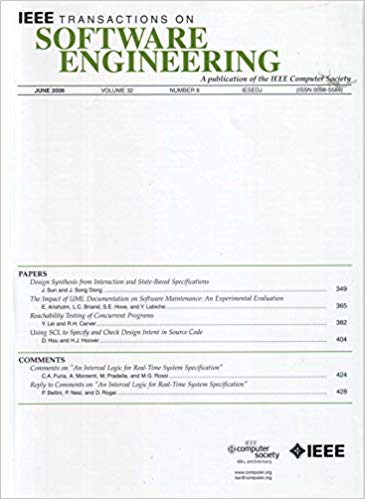R2API: A Novel Method for Web API Recommendation by Using HGNNs With Multi-Task Learning
IF 5.6
1区 计算机科学
Q1 COMPUTER SCIENCE, SOFTWARE ENGINEERING
引用次数: 0
Abstract
Mashup is an application that implements specific functions by integrating one or more web APIs, which are capable of providing services or data on the Internet, thus avoiding the behavior of repeatedly building wheels. With the number of web APIs on various platforms being vast, identifying the suitable web APIs for mashups has become a challenging problem for developers. In this case, researchers propose many methods to recommend available web APIs to mashup developers according to their requirements. Given that the high-order interactions between data are crucial for the recommendation tasks, this work proposes a novel web API recommendation method called R2API. R2API constructs a series of homogeneous hypergraphs from historical data and then utilizes multiple HGNNs (Hypergraph Neural Networks) to learn the vectors for nodes in the hypergraphs. HGNN excels in capturing the high-order interactions between data while effectively mitigating the over-smoothing problem. To reduce the impact of noise and atypical features in historical data and enhance the quality of node vectors, R2API adopts a multi-task joint training strategy to train all HGNNs simultaneously. Meanwhile, R2API assigns semantic vectors to nodes in the hypergraphs during HGNN training to further improve the quality of node vectors. When faced with a specific requirement, R2API identifies its related mashup nodes in the hypergraphs and learns the requirement vector based on the vectors of these nodes, so as to complete the work of web API recommendation. Experiments conducted on the ProgrammableWeb and GitHub datasets show that R2API achieves superior performance compared to baseline methods.R2API:一种基于hgnn和多任务学习的web API推荐新方法
Mashup是一种通过集成一个或多个web api来实现特定功能的应用程序,这些api能够在Internet上提供服务或数据,从而避免了重复构建轮子的行为。由于各种平台上的web api数量庞大,确定适合mashup的web api已成为开发人员面临的一个具有挑战性的问题。在这种情况下,研究人员提出了许多方法,根据mashup开发者的需求,向他们推荐可用的web api。鉴于数据之间的高阶交互对于推荐任务至关重要,本工作提出了一种新的web API推荐方法,称为R2API。R2API从历史数据中构建一系列同构超图,然后利用多个hgnn (Hypergraph Neural Networks)来学习超图中节点的向量。HGNN在捕获数据之间的高阶交互方面表现出色,同时有效地缓解了过度平滑问题。为了减少历史数据中噪声和非典型特征的影响,提高节点向量的质量,R2API采用多任务联合训练策略,同时训练所有hgnn。同时,R2API在HGNN训练过程中为超图中的节点分配语义向量,进一步提高节点向量的质量。R2API在面对特定需求时,在超图中识别出与自己相关的mashup节点,并根据这些节点的向量学习需求向量,从而完成web API推荐的工作。在ProgrammableWeb和GitHub数据集上进行的实验表明,与基线方法相比,R2API具有优越的性能。
本文章由计算机程序翻译,如有差异,请以英文原文为准。
求助全文
约1分钟内获得全文
求助全文
来源期刊

IEEE Transactions on Software Engineering
工程技术-工程:电子与电气
CiteScore
9.70
自引率
10.80%
发文量
724
审稿时长
6 months
期刊介绍:
IEEE Transactions on Software Engineering seeks contributions comprising well-defined theoretical results and empirical studies with potential impacts on software construction, analysis, or management. The scope of this Transactions extends from fundamental mechanisms to the development of principles and their application in specific environments. Specific topic areas include:
a) Development and maintenance methods and models: Techniques and principles for specifying, designing, and implementing software systems, encompassing notations and process models.
b) Assessment methods: Software tests, validation, reliability models, test and diagnosis procedures, software redundancy, design for error control, and measurements and evaluation of process and product aspects.
c) Software project management: Productivity factors, cost models, schedule and organizational issues, and standards.
d) Tools and environments: Specific tools, integrated tool environments, associated architectures, databases, and parallel and distributed processing issues.
e) System issues: Hardware-software trade-offs.
f) State-of-the-art surveys: Syntheses and comprehensive reviews of the historical development within specific areas of interest.
 求助内容:
求助内容: 应助结果提醒方式:
应助结果提醒方式:


